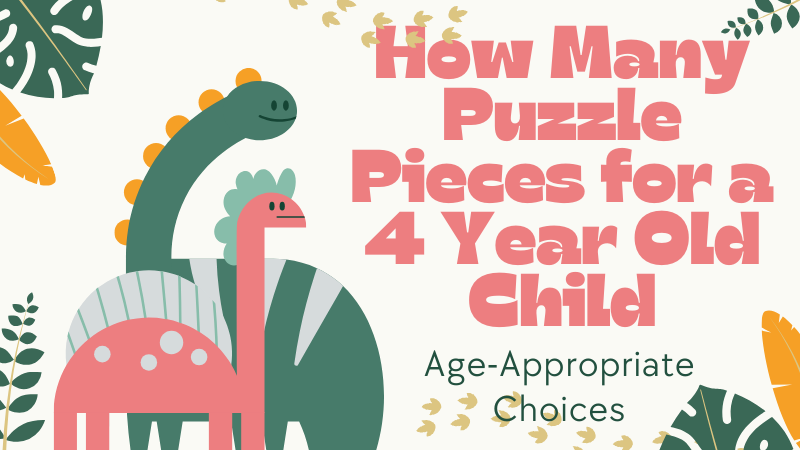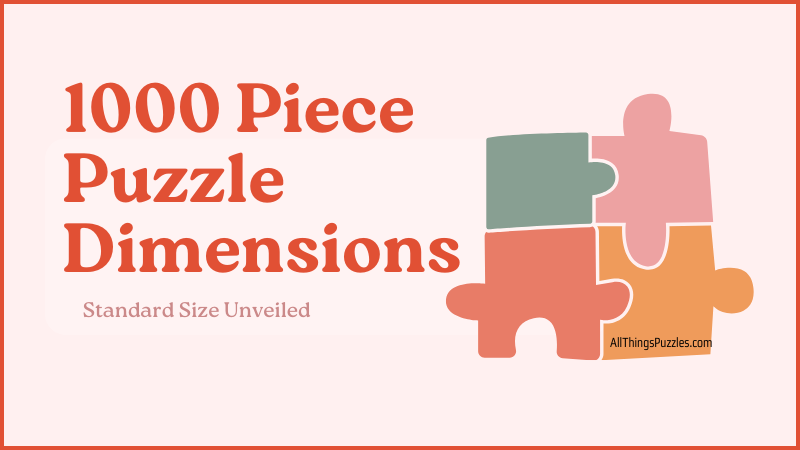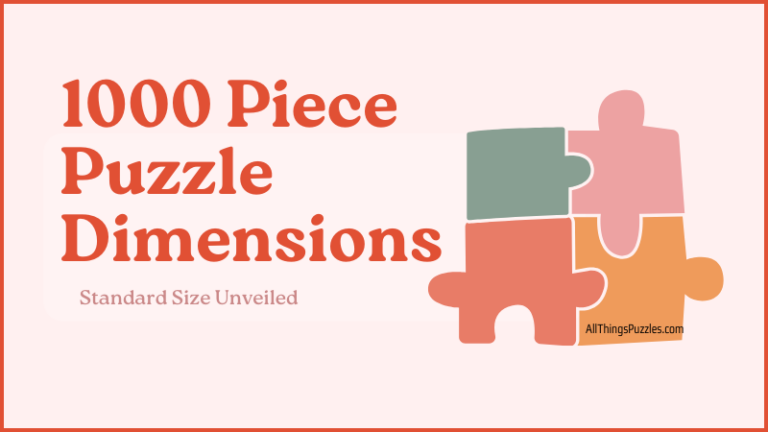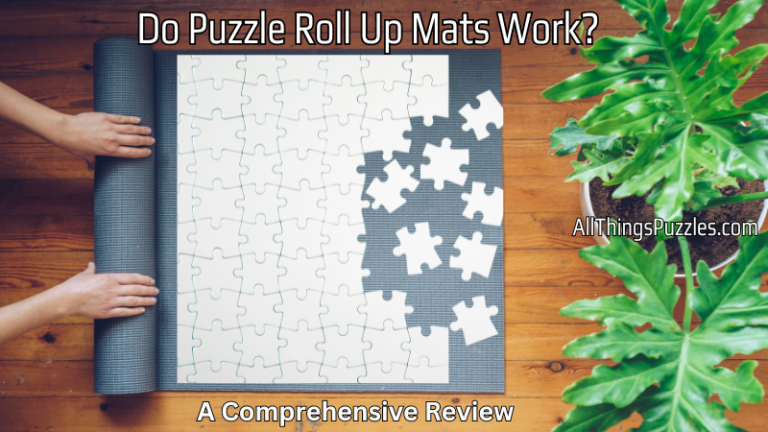As parents, caregivers, or educators, we’re constantly seeking activities that foster our children’s cognitive development while providing engaging entertainment. Puzzles stand out as a timeless favorite, offering a blend of fun and educational value. However, determining the right level of complexity can be a puzzling task in itself. This is particularly true when considering the capabilities of a child and may lead you to wonder the ideal number of puzzle pieces for a 4 year old child.
In this guide, we delve into the world of puzzles, specifically tailored to the cognitive abilities and developmental milestones of 4-year-olds. We’ll explore the benefits of puzzles at this stage of childhood, discuss the cognitive skills they help develop, and most importantly, answer the burning question: how many puzzle pieces for a 4-year-old child is ideal.
Join us on this journey as we unravel the secrets behind choosing the perfect puzzle for your little one, ensuring hours of enriching playtime and valuable learning experiences.
Key Takeaways
- Puzzles with larger pieces suitable for small hands are preferable for 4-year-olds to develop fine motor and problem-solving skills.
- The ideal number of pieces for this age group ranges from 24 to 48, balancing challenge and skill level.
- Manufacturers typically provide age and piece count recommendations to help choose the right puzzle for a child’s development stage.
When selecting a puzzle for a 4-year-old child, it’s essential to consider the developmental benefits while ensuring the activity is engaging and age-appropriate. Puzzles are a great way to enhance fine motor skills, cognitive skills, and problem-solving abilities in young children. For 4-year-olds, typically, puzzles with larger pieces are most suitable as they are easier for little hands to maneuver, promote hand-eye coordination, and are safer than puzzles with smaller pieces. Wooden puzzles, chunky puzzles, and peg puzzles can provide the right level of difficulty to keep a child interested without leading to frustration.
At this age, a puzzle with 24 to 48 pieces is usually the sweet spot. This range offers just enough challenge to develop critical thinking skills while still being manageable. A 24-piece puzzle can serve as a gentle introduction to more complex puzzles, while a 48-piece puzzle can be a step up for children ready for slightly more challenging puzzles. Most manufacturers provide recommendations on the back of the box, indicating the suitable age group and number of puzzle pieces, aiding in selecting the perfect puzzle.
Understanding Puzzles for Young Children
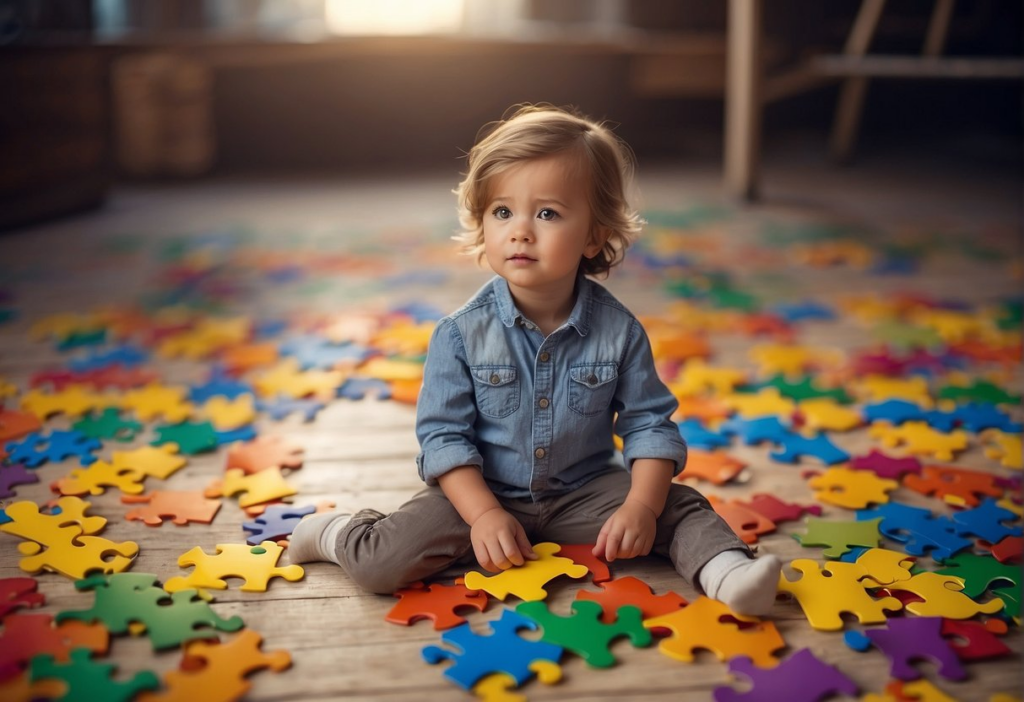
Fine motor skills are strengthened as young children manipulate puzzle pieces to fit them together. This activity promotes problem-solving as the child figures out which piece goes where. At 4 years of age, opt for puzzles that challenge but don’t frustrate, so larger pieces and fewer pieces are your best choice.
Younger children often enjoy puzzles that feature bright, colorful images or their favorite cartoon characters, which not only make the experience much fun but also help with visual perception and language skills. Puzzles are a good idea to integrate into playtime as they are not just, but also support cognitive skills like memory and critical thinking.
Remember, safety is important. Be sure to choose puzzles without small parts to avoid choking hazards.
Age-Appropriate Puzzle Selection
For 4-year-olds, the right puzzle will have larger pieces and fewer pieces, as their fine motor skills, hand-eye coordination, and problem-solving abilities are still developing. A good starting point is a 24-piece puzzle or a simple floor puzzle. These offer larger pieces for those fine motor skills and are generally easier for them to handle.
- Puzzle Size & Piece Count:
- For younger children: 8 to 24 pieces
- For older children in this age group: up to 48 pieces
Considerations:
- A larger piece size is easier for small hands to manipulate, enhancing motor skill development.
- Interlocking pieces in simple shapes can assist with matching and concentration.
- The number of pieces should be appropriate for the child’s age and ability – a 24-piece puzzle is a good choice for novices, while a 48-piece puzzle can be suitable for those ready for more challenge.
- Bright colors and distinct shapes help in developing visual perception and cognitive skills.
- The level of difficulty should allow children to complete the puzzle at their own pace, promoting a sense of accomplishment.
Themes and Topics for Four-Year-Olds
When selecting the right puzzle for your four-year-old, consider interesting themes that captivate young children. A dinosaur puzzle or a solar system puzzle can not only be a great way to introduce them to science but also bolster their cognitive skills.
Types and Topics
- Animals & Nature: Engage your child with puzzles depicting wildlife or natural settings.
- Outer Space: Solar system puzzles enhance knowledge and interest in astronomy.
- Cartoons: Favorite characters can make the puzzle-solving more enjoyable.
Puzzle Types
- Chunky Puzzles: With chunky pieces or knobs, these are suitable for younger children.
- Floor Puzzles: Large pieces that come together to form a picture they can walk around and explore.
- Jigsaw Puzzles: Range from simple shapes to more detailed scenes with larger pieces.
Materials
Puzzles for young children should be made of sturdy materials that can withstand frequent handling. Wooden puzzles are a prime example, offering greater durability than cardboard puzzles. Melissa & Doug, for example, make a wide variety of wooden puzzles featuring pegs or chunky pieces that are suitable for little hands. Your 4-year-old’s puzzle should be easy to clean and free of small parts that could pose choking hazards.
- Recommended Materials:
- Wooden puzzles
- Durability Factors:
- Easy-to-clean surfaces
- Large, sturdy pieces that resist bending or breaking
Hygiene with Puzzle Pieces
Cleaning your child’s puzzles should become a part of regular toy maintenance, ensuring both clean pieces and a hygienic play environment. It’s a good idea to clean them after each use to keep the germs at bay. Furthermore, a tidy collection promotes a better learning experience and long-term engagement with this fun brain teaser activity.
- Wooden Puzzles: Best for their sturdiness and ease of cleaning. Wipe with a damp cloth and mild soap.
- Plastic Puzzles: Can be sanitized with wipes or disinfectant solutions.
- Cardboard Puzzles: Less durable, but can be lightly wiped down; avoid soaking.
Skill Level and Development
Puzzles are a fun brain teaser that can develop problem-solving and critical thinking skills. Check the back of the box for recommended age group and difficulty levels to match your child’s skill level and pace.
Safety Precautions
- Regularly inspect pieces for wear and tear.
- Ensure puzzles are appropriate for a child’s skill level; check the back of the box for age recommendations.
- Replace puzzles that have small parts or damaged edges to prevent accidental ingestion or cuts.
Educational Benefits of Puzzles
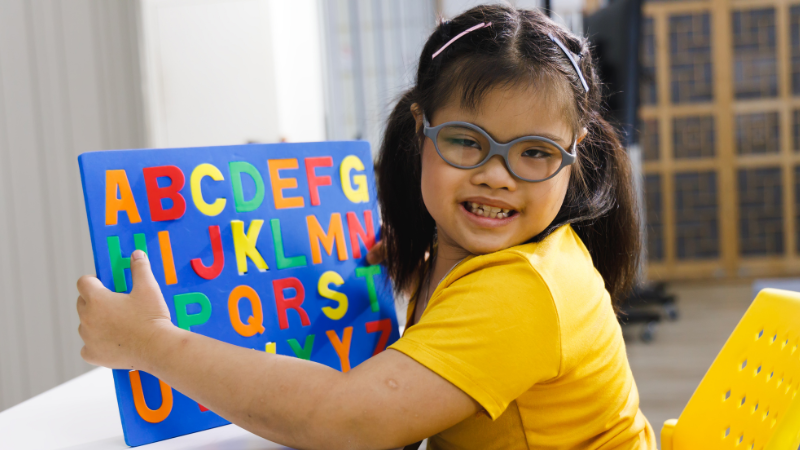
Puzzles offer numerous educational benefits to young children, developing critical skills ranging from cognitive enhancements to physical coordination.
Cognitive and Problem-Solving Enhancement
Cognitive Skills: For young children, puzzles are more than just play. They are fundamental tools that enhance cognitive skills. A 24-piece puzzle that features shapes, colors, and letters is perfect for a child around 4 years of age. As they piece together puzzles, they practice recognition and recall, boosting their memory.
Problem-Solving Skills: Encourage problem-solving with puzzles that require reasoning. The act of trial and error used in solving these puzzles boosts reasoning and cognitive problem-solving abilities. Also as they work out where each piece fits, they learn the fundamentals of planning and logic.
Physical Skill Development
Fine Motor Skills: Puzzles contribute significantly to the development of fine motor skills. For your young children, selecting puzzles like peg puzzles or chunky puzzles can strengthen the small muscles in their hands as they grasp and place each piece, practicing the pincer grip needed for writing.
Hand-Eye Coordination: As your child manipulates different festive activities through puzzles with varying difficulty levels, it enhances their hand-eye coordination.
Creative and Interactive Puzzle Types
Engage a child’s reasoning, logic, and spatial awareness with creative and interactive puzzle types. Puzzles that depict famous landmarks or outer space can also provide a fun and educational experience. Opt for puzzles with themes that teach skills such as colors, geometric shapes, or cartoon characters to keep the process engaging.
By paying attention to the total number of puzzle pieces and selecting the right puzzle for your child’s age group and skill level, you can provide plenty of puzzles that are not only much fun but also greatly benefit their cognitive skills and critical thinking skills.
Psychological Impacts of Puzzle Play
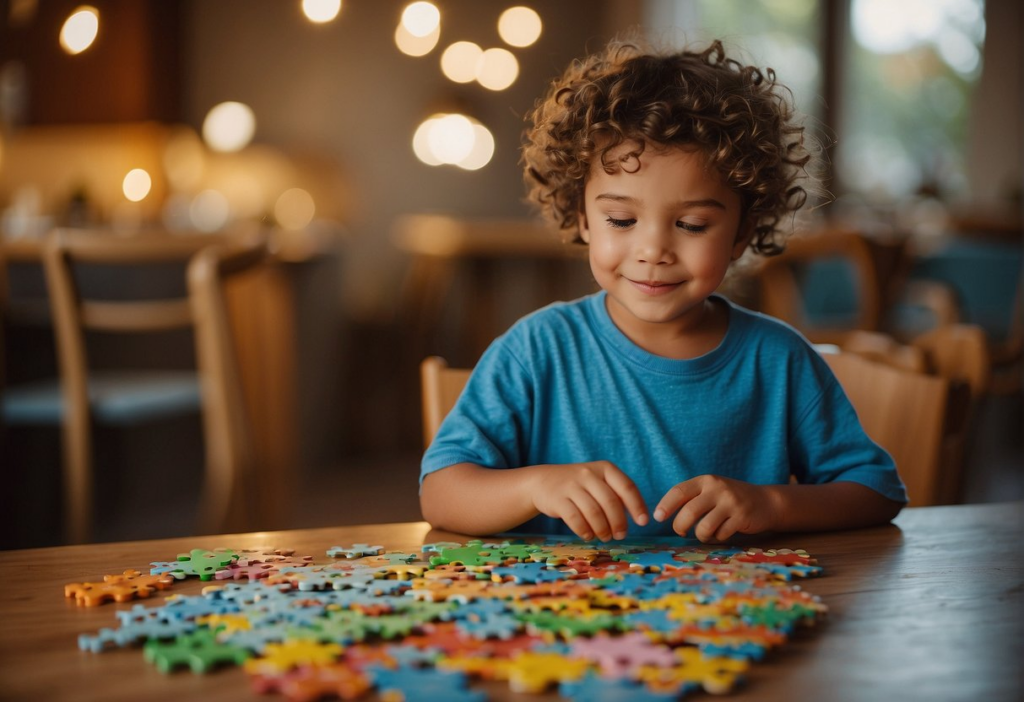
Puzzle play is instrumental in fostering patience and boosting self-confidence in young children. Through the assembly of puzzles, children engage in an activity that not only entertains but also develops crucial cognitive and emotional skills.
Building Confidence and Patience
When you introduce a puzzle to a 4-year-old, you give them an opportunity to succeed at a challenging yet achievable task. Starting with simple puzzles helps young children gain the satisfaction of completing a task, which works wonders for their self-confidence. As they learn to match pieces and see a picture come together, they experience a sense of accomplishment. This is the good news: even 24-piece puzzles that are designed for this age group can make your little one feel like they have conquered a big challenge.
Puzzles are also a great way to teach children patience. Sitting down with a 48-piece puzzle or floor puzzles allows young children to work at their own pace, understanding that some tasks require time and effort to complete. As their fine motor skills and hand-eye coordination improve, so does their ability to tackle puzzles with a higher piece count.
Advanced Puzzle Options
When selecting advanced puzzles for a 4-year-old, consider the number of pieces and type of puzzle to match with their developing skill set.
Transitioning to More Complex Puzzles
For young children around 4 years of age, the transition to more complex puzzles should involve puzzles that increase in piece count but still suit their fine motor skills and cognitive development. It’s a good idea to start with an 8 or 24-piece puzzle, and as your child masters these, you can gradually offer a 48-piece puzzle.
- Skill Level: Ensure the level of difficulty matches the child’s ability, starting with simple puzzles and progressing to more challenging puzzles.
- Piece Size: Select puzzles with larger pieces for early elementary students, which are easier to handle and help avoid frustration.
- Types of Puzzles: Introduce a variety of puzzles, such as chunky puzzles, peg puzzles, and frame puzzles, to diversify the problem-solving experience.
Always check the back of the box for the recommended age group and total number of puzzle pieces to ensure a good match.
FAQs
What age group are 50-piece puzzles designed for?
50-piece puzzles are often best suited for older children, typically those who are 5 years of age or above. This puzzle type challenges a young child’s problem-solving and language skills. As they reach this age, children can handle smaller pieces with more details, which contributes to their growing cognitive development.
At what age can children typically complete a 100-piece puzzle?
Most children are ready to tackle 100-piece puzzles around 6 to 8 years of age. This level of difficulty helps to further develop critical thinking skills and patience. Each child is unique, so some may find these challenging puzzles a good fit earlier or may need more time to develop the necessary skill level.
How many pieces should a puzzle have for a 5-year-old?
A 5-year-old can usually enjoy puzzles that contain up to 48 pieces. At this age, floor puzzles with large pieces and vibrant images of famous landmarks or colorful cartoon characters are a great way to captivate their attention and refine motor skills. These puzzles are just the right piece count to provide an enjoyable yet attainable challenge for 5-year-olds.
Conclusion
How Many Puzzle Pieces for a 4 Year Old Child is ideal? At this age , 24 and 48-piece puzzles are common and beneficial. Wooden puzzles, chunky puzzles, and peg puzzles are great for young children as they have larger pieces that are easier to handle for little hands.
Floor puzzles are a great way to incorporate both gross motor skills and cognitive development, turning problem-solving into an active experience. For younger children, choosing puzzles designed with larger pieces prevents frustration and fits their skill level while still being challenging puzzles.
Simple puzzles with fewer pieces foster cognitive skills and offer a fun brain teaser without overwhelming them. Knob puzzles and frame puzzles, with themes like outer space or cartoon characters, keep the activity engaging while building problem-solving skills. As they near 5 years of age, puzzles with 50 or even up to 100 pieces can become the best puzzles to provide a good challenge.
It’s a good idea to gradually introduce different types of puzzles with different festive activities, ensuring a good time while boosting various skills. Look for options with clean pieces that also include a colorful poster of the jigsaw or guide on the back of the box to aid in completion.
To summarize, the perfect puzzle combines the right puzzle piece count with appropriate difficulty levels, offering a chance to progress at their own pace. Fine motor skills, language skills, visual perception, and critical thinking skills all get a boost from the best choice in puzzles for young children of this specific age.
